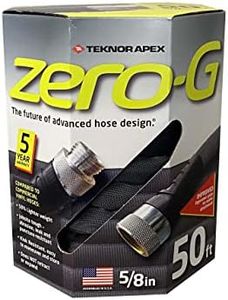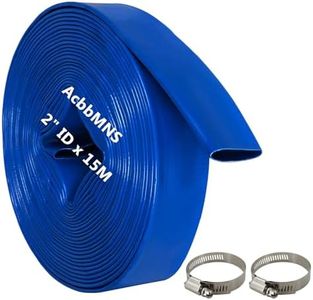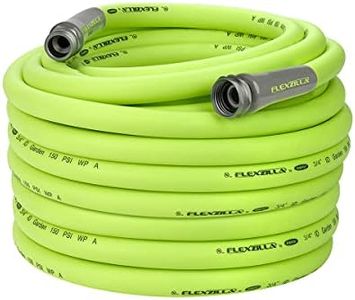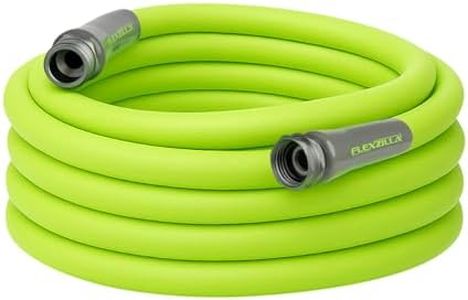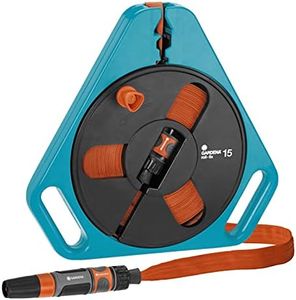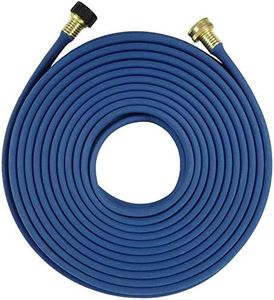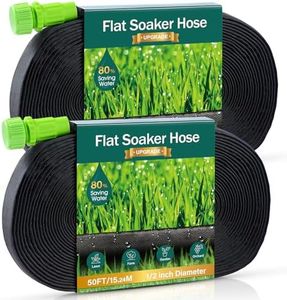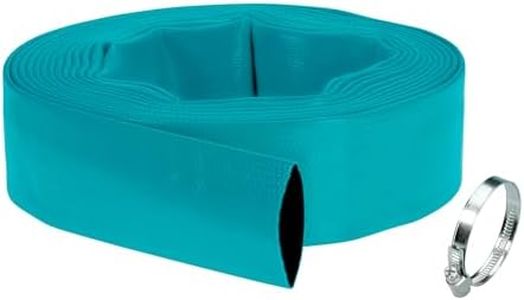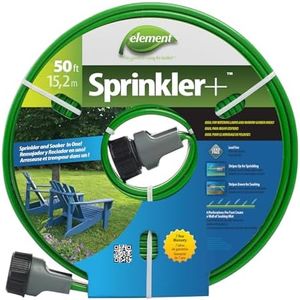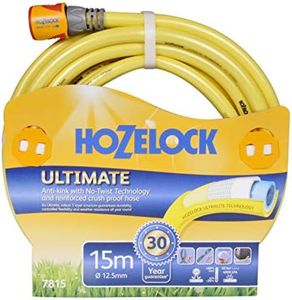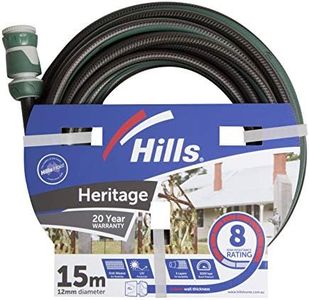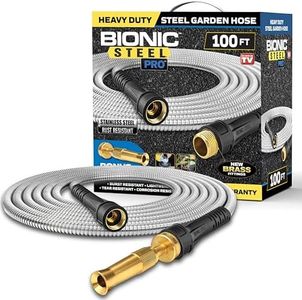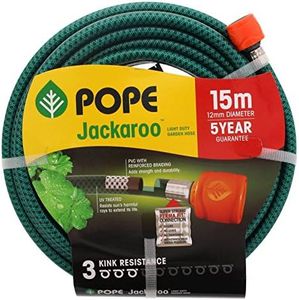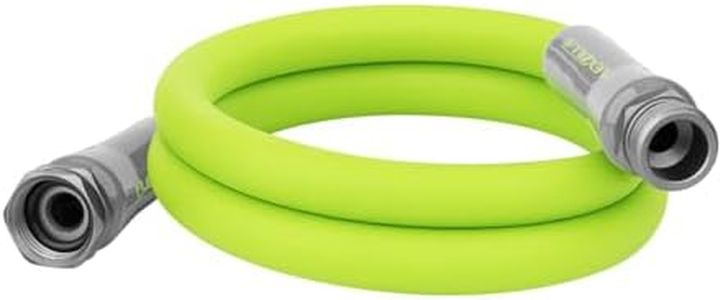We Use CookiesWe use cookies to enhance the security, performance,
functionality and for analytical and promotional activities. By continuing to browse this site you
are agreeing to our privacy policy
10 Best Flat Garden Hose
From leading brands and best sellers available on the web.By clicking on a link to a third party's website, log data is shared with that third party.
Buying Guide for the Best Flat Garden Hose
Choosing a flat garden hose might seem simple, but taking the time to understand your needs and match them with the right product specs ensures you get a hose that’s practical, durable, and easy to use. Flat garden hoses are popular because they lie flat when not in use, making them easy to store and preventing tangling, but they come in a variety of materials, lengths, diameters, and features. Consider how you plan to use the hose—watering a large garden, washing the car, or just light yard maintenance—which will help you focus on the most important specs for your situation.LengthThe length of a flat garden hose determines how far it can reach from your water source. Hoses come in a range of lengths, usually from 25 feet up to 100 feet or more. Consider where your hose will connect and how much area you need to cover. If your garden or yard is small, a shorter hose is easier to handle; for larger spaces, a longer hose provides greater flexibility. Remember, unnecessarily long hoses can be heavier and reduce water pressure, so measure your space and select a length that fits your needs without too much excess.
Hose DiameterThe diameter of a hose affects how much water flows through it at a given time. Common diameters are 1/2 inch, 5/8 inch, or 3/4 inch. Smaller diameters are lighter and easier to handle, making them good for light watering or washing. Larger diameters deliver more water, which is useful for large gardens or if you need to fill things like pools quickly. Choose the diameter according to how much water flow you require and how heavy a hose you are comfortable maneuvering.
MaterialFlat hoses are usually made from vinyl, rubber, or a reinforced fabric. Vinyl hoses are lightweight and inexpensive, suitable for light-duty use, but may not be as durable. Rubber hoses are stronger and more flexible, ideal for heavier tasks and tougher conditions. Reinforced or fabric hoses are designed for durability while remaining easy to store. Think about how often and in what conditions you’ll use the hose—frequent, tough usage might need a more robust material, while occasional or light use won’t require the heaviest construction.
Couplings/ConnectorsThe couplings are the fittings at each end of the hose that attach to your faucet or spray nozzle. They are usually made from plastic or metal. Metal, such as brass, is more durable and less likely to leak, making it suitable for frequent use. Plastic is lighter and can be easier to thread on and off but may wear out faster. If you plan to attach and detach the hose often, metal connectors are a wise choice; for occasional use, plastic may suffice.
Burst PressureBurst pressure indicates how much water pressure the hose can handle before it may fail. This is typically marked in pounds per square inch (PSI). For garden tasks, a hose with moderate burst pressure works well, but higher ratings mean the hose is more resistant to damage if you have stronger water pressure or want extra durability. Select burst pressure based on your home’s water pressure and the kind of attachments (like sprinklers) you plan to use.
Flexibility and StorageOne main appeal of flat hoses is that they can be coiled or rolled up flat for easy storage. However, some are more flexible or easier to pack away than others, depending on the material and design. If you need to store the hose in a cramped space, look for a hose that packs down compactly and resists kinking. Users who put their hose away after every use should particularly focus on the ease of handling and storage.
WeightThe weight of a flat garden hose affects how easy it is to move, set up, and put away. Heavier hoses may be more durable, but they can be cumbersome, especially for older users or those with limited strength. Lighter hoses are easier to manage but may sacrifice some durability. Match the weight to what you can comfortably carry and store regularly.
